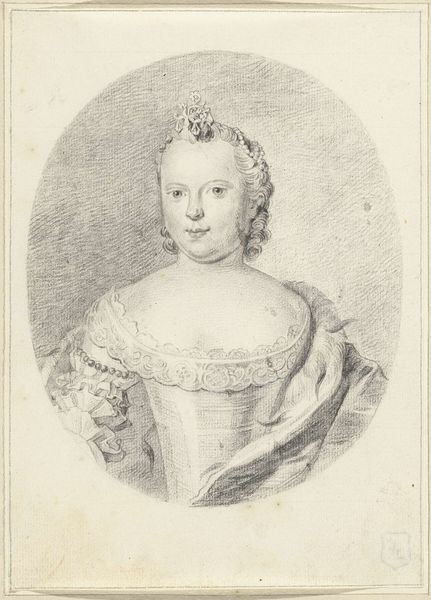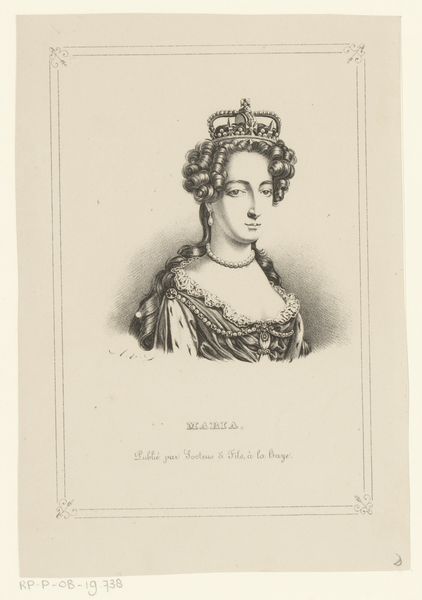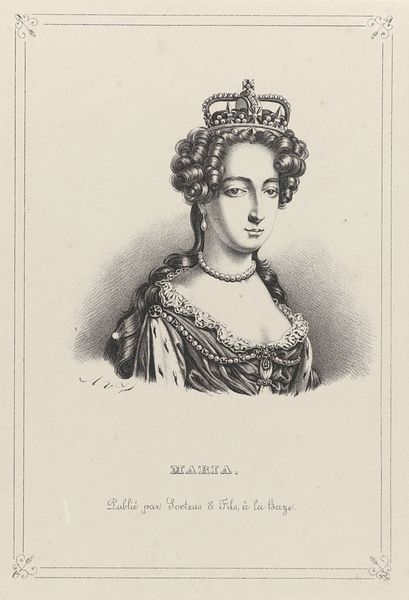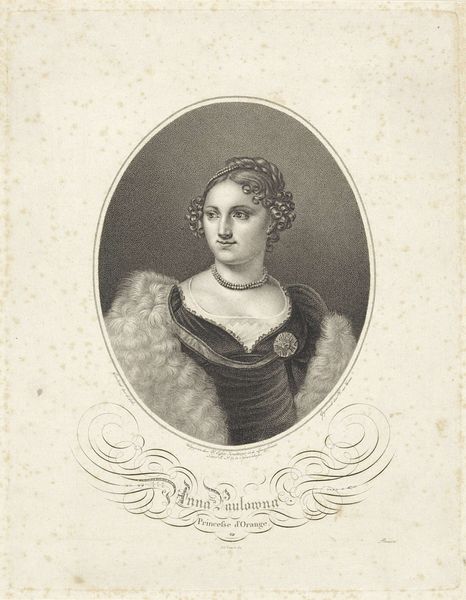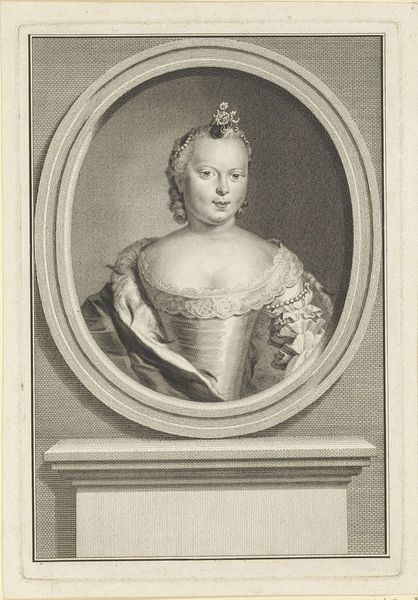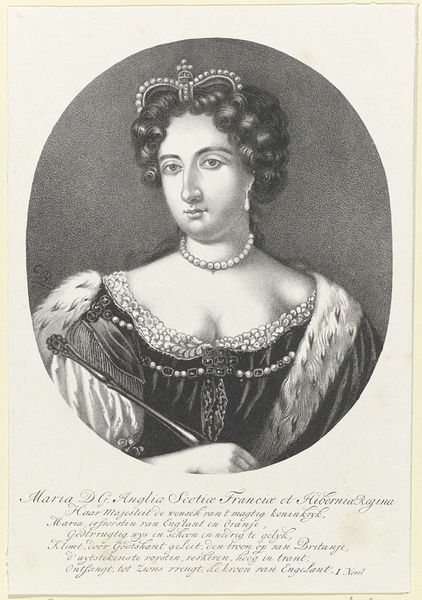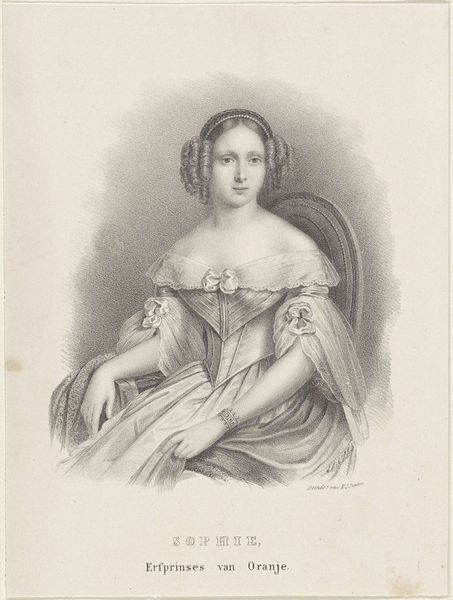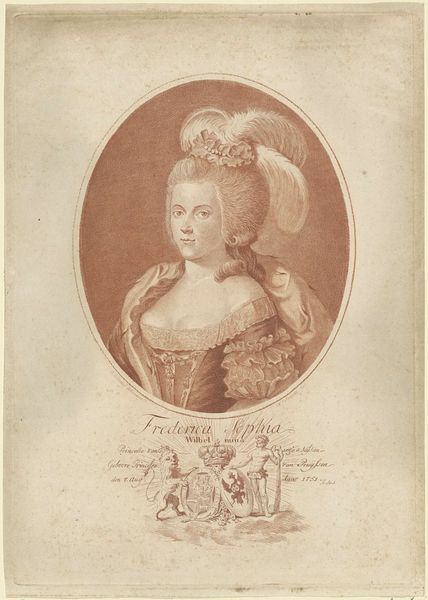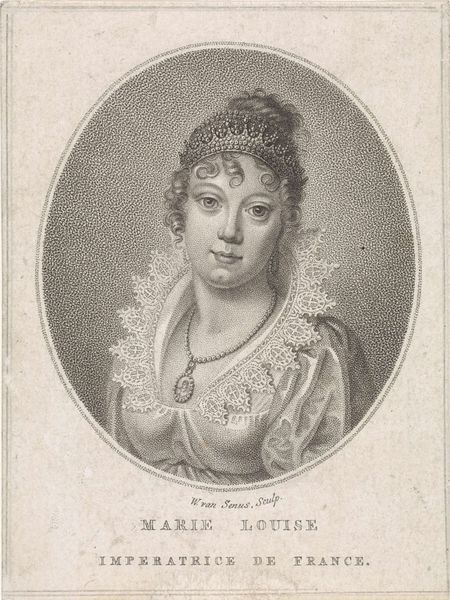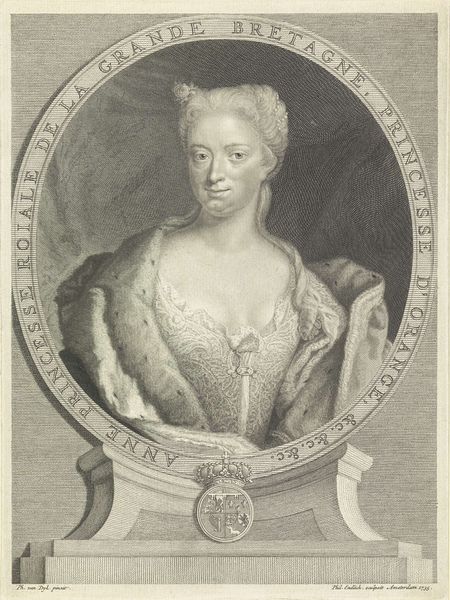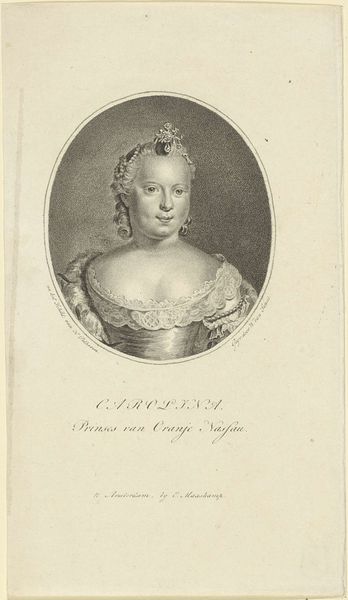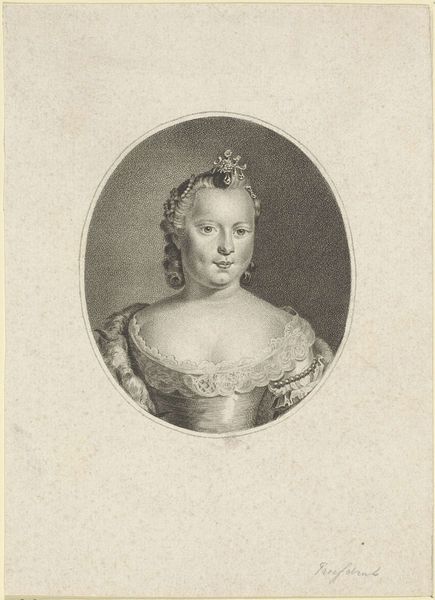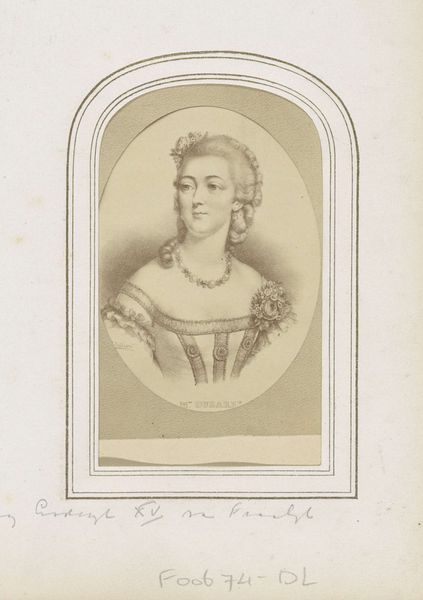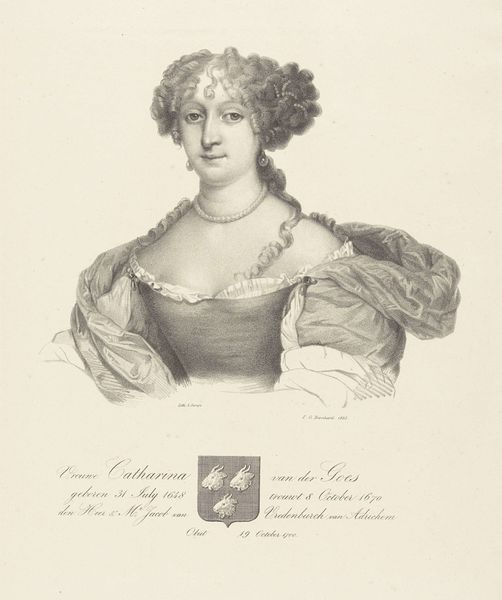
engraving
#
portrait
#
pencil sketch
#
historical fashion
#
romanticism
#
19th century
#
engraving
Dimensions: height 201 mm, width 147 mm
Copyright: Rijks Museum: Open Domain
Curator: Looking at this engraving, the rendering is impressive but what first catches my attention is the slightly melancholic gaze, it’s quite magnetic. Editor: It certainly is. The work, entitled “Portret van Carolina, prinses van Oranje-Nassau," dating from around 1834-1840, is currently held in the Rijksmuseum. It's by N.M. Schild. Knowing it portrays Carolina of Orange-Nassau shifts my understanding entirely. Curator: Absolutely. Placing it within the context of the House of Orange-Nassau reveals layers of political and social power at play. The seemingly simple act of portraiture becomes a statement about lineage, legitimacy, and dynastic ambition. Did women have power or merely were powerful through the men in their lives at this period? Editor: Precisely. And thinking about it from an art historical perspective, the act of creating and circulating this image served very specific socio-political purposes. The proliferation of her image undoubtedly played a part in constructing and maintaining the image of the Dutch monarchy at this moment in time. Curator: I'm intrigued by the material itself. Engravings, often disseminated widely, allowed for a specific representation to be reproduced and consumed en masse. How did that shape public perception of royal women during that period? Editor: I imagine it offered a controlled intimacy. People could encounter a version of their princess outside of strictly staged public events. Curator: Right. Looking closer, the intricacy of the lace, the pearl ornamentation within her hair, speaks volumes. Each material signifies status and belonging within a tightly stratified social structure. We tend to read fashion for its aesthetics but actually its the power structures at play that define fashion and therefore that dictates it. Editor: Absolutely, the deliberate presentation of these items communicates a specific, intentional, narrative. Curator: Considering the historical weight, revisiting historical imagery invites dialogue about women's representation within political spheres, reminding us to actively examine the narratives woven into visual culture. Editor: Seeing art through these narratives makes understanding history so much richer, adding another layer of appreciation and engagement to works like this one.
Comments
No comments
Be the first to comment and join the conversation on the ultimate creative platform.
